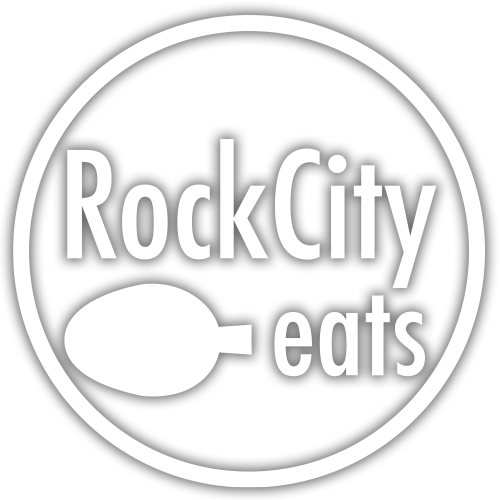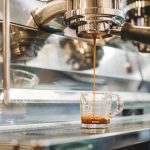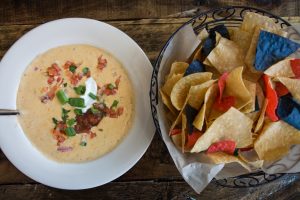If you’re a fan of the latte or cappuccino, then you’ve likely had your share of espresso. Espresso is a popular drink, and the characteristics of beans from all over the world, as well as their extraction methods, are as varied as the individuals who enjoy partaking in the small, made-to-order, concentrated coffee.
Have you ever wondered why your espresso tastes a certain way? Brothers Stephanos and Markos Mylonas, owners at Hillcrest’s beloved Mylo Coffee Co., sit down and talk about their take on the drink.
The two start by defining espresso as the extraction of about 30 to 40 grams of aromatic coffee essence, made with a brewing ratio of about 1.5 to 2 of nearly boiling water, under about 9 bars of water pressure. Espresso is generally thicker than coffee brewed by other methods, has a higher concentration of suspended and dissolved solids, and has crema on top. Markos says, “Espresso can be made by grinding coffee from any origin and at any roast level. However, making consistently delicious, well-crafted espresso is not an easy art to master.”
Describing how to make espresso in an article is an endeavour that’s both foolish and optimistic. Espresso is a physical act: a manifestation of the barista’s skill and effort exerted upon a machine and an agricultural product. Espresso preparation at Mylo begins with freshly roasted beans, a top of the line espresso machine and coffee grinder, and a skilled barista. Coffee is ground and dosed in the portafilter. The grounds are distributed, groomed and tamped. The portafilter is inserted on the machine, extraction begins and the output is measured.
The end result will not only depend on the taste attributes of the bean itself but also on the use of optimal grind fineness, water temperature, extraction pressure profile and duration. During the process, all sorts of tiny changes can affect taste. Stephanos says, “Espresso is extremely temperamental, it is affected by temperature and moisture changes. For example, as coffee ages, you’ll need to loosen up the grind a little. If the weather changes, you’ll have to change the grind. As the the weather gets more humid -for example if you have a crowd of people in the store- you need to loosen the grind. The important part is to always pay attention as every espresso you make will be slightly different.”
The two are quick to call the process scientific, rather than magical. There are ways that the team at Mylo can measure and quantify the process. Markos explains, “The reason why we’re weighing it in and out is to make sure that what you tasted at the beginning of the shift when you were dialing in your grind and what you tasted 20 minutes ago is what you’re brewing right now. If your weights and ratios are correct, then what you’re tasting will be correct as well.”
Typically, coffee shops produce blended espresso that could rely on a combination of three to five different beans. Currently, Mylo is working toward a single origin bean espresso, which adds another caveat to production.
Stephanos explains, “Our goal is to offer our customers an espresso shot from a single farm or estate and lets the characteristics of that origin shine through the drink in the same way they do in single estate wines. These are predominantly shots with more clarity and sweetness. Our lattes and cappuccinos however will still require the heavier body and flavour depth of a blend.”
This goal should explain the logic behind Mylo’s drink menu, as Stephanos says, “If you understand that, then you can understand the philosophy towards the simplicity of our drinks in that we only have a latte, a cappuccino, a cortado, and then espresso. These drinks represent different quantities of steamed milk added to the espresso, and, it allows the customer to chose the intensity of their coffee.”
Right now the brothers are serving a two-bean blend representing Ethiopia and Burundi.
Sometimes, like in any brewing method, you can over or under extract the coffee.
Stephanos explains, “If you’re under extracting, you’ll have a lot of sour, grassy and earthy flavor notes with a lack of sweetness and a weak body. If you’re over extracting, it’ll taste really strong(body), bitter, and astringent. Consistent measurements and close observation of every shot we produce is what helps us avoid that.”
Part of the fun of working with espresso is that it’s a product that is dynamic. You can follow a set of rules and go through the movements but the most important step is to engage your senses. Markos says, “ Every time a new coffee is introduced you need to go back to square one. The bean’s flavor and aromas are indeed defined by its origin and processing, but the way that you bring them out both in your roasting and extraction needs to be defined by you.”
Espresso, although mostly quantifiable, is ultimately the product of those who make it. Markos says, “You can’t really copy someone else … it won’t work.” Keep that in mind the next time you take a sip.









